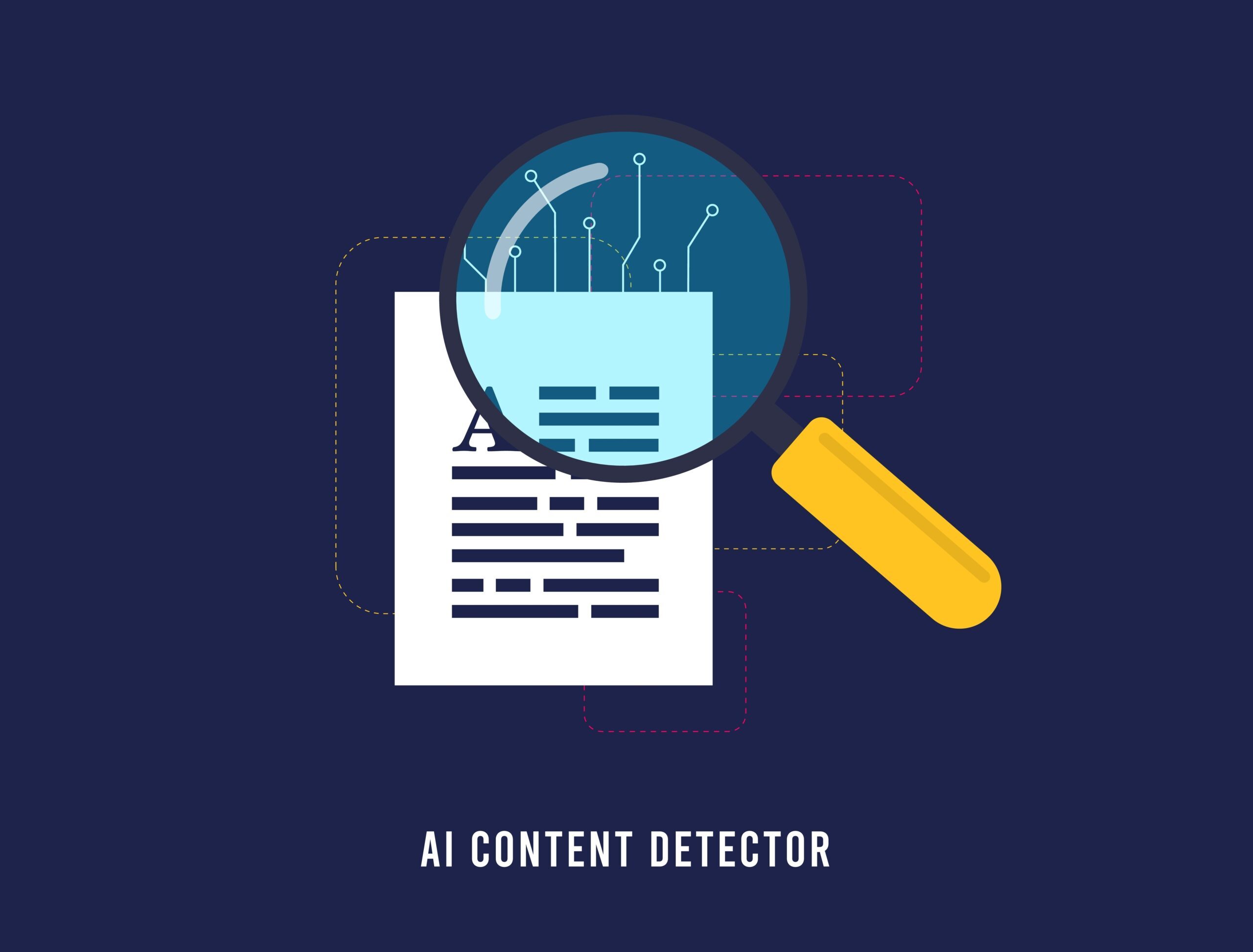Is AI Content Detectable?
In recent years, using AI tools to generate content has become increasingly popular. These tools utilize natural language processing (NLP) algorithms and machine learning techniques to generate text automatically based on a given input.
Now the question is: is AI content detectable? Yes. There are tools designed specifically to detect AI-generated content. This is important because it helps prevent the spread of misinformation and fake news, which can seriously affect society.
Do you want to gain more insights about this topic? Let’s unravel it together.
What is AI Content, AI Detection & AI Content Detector?

AI Content is any text, image, video, or other media created using artificial intelligence technologies. These technologies can generate content automatically based on specific inputs, often mimicking human writing or creative processes.
AI Detection is the process of identifying whether AI created a piece of content. This involves analyzing the content to spot patterns or characteristics typical of AI-generated outputs.
An AI Content Detector is a tool designed to identify and flag content produced by AI.
It compares the content against known markers of AI generation using algorithms and data analysis techniques. This helps ensure the authenticity and integrity of information shared online.
Is AI Content Detectable?
Yes, AI content is detectable. AI content detectors use special software to look for patterns and clues that indicate machine-generated text. They examine things like unusual word choices, repetition, and the overall structure of sentences to identify AI-produced content. This helps ensure that the information we read online is genuine and reliable.
How AI Content Detectors Work?
Understanding how AI content detectors work can be pretty straightforward. These detectors use advanced algorithms to analyze the content. First, they break down the content into smaller parts, such as words and sentences.
Then, they look for patterns or features common in AI-generated content but unusual in human writing. For example, AI might use repetitive phrases or unusual word choices because it follows specific programming rules.
In addition, AI content detectors compare the text against a database of known AI-generated content. If the text has similarities with the samples in the database, the detector might flag it as likely produced by AI.
This process involves a lot of data analysis and pattern recognition but compares the text against what is expected from human writing versus machine writing.
To sum up, AI content detectors look for clues in the text that suggest it was written by an AI and compare it with known AI outputs to make their determination. This helps keep the information trustworthy and of high quality.
Top AI Content Detectors
- OpenAI’s GPT-3 Detector: This tool is specifically designed to detect content generated by GPT-3, one of the most advanced AI language models. It uses sophisticated algorithms to flag AI-generated text with a high degree of accuracy.
- Copyleaks AI Content Detector: Copyleaks offers a robust content detection service that can identify AI-generated text. It analyzes linguistic patterns and compares content against a comprehensive database of known AI outputs.
- AI Detector Pro: This tool uses deep learning and natural language processing techniques to detect AI-generated text. It efficiently identifies content generated by popular language models like GPT-3, BERT, and XLNet.
- AI Text Classifier by Hugging Face: Hugging Face offers an easy-to-use tool for detecting AI-generated text. It’s based on Transformers, a powerful machine-learning model, and provides reliable results.
- Winston AI: Winston AI is a content verification platform that uses advanced AI algorithms to identify and flag fake or AI-generated content. Its detection methods are continuously updated to keep up with advancements in AI technology.
Helpful Ways to Avoid AI Content Detection
- Rephrase sentence structure and format: AI-generated content often follows a predictable pattern. To avoid detection, you can change the structure and format of sentences to make them more unique.
- Use synonyms: AI programs may use similar words repeatedly. Using synonyms allows you to vary your word choice and make the text less likely to be detected as AI-produced.
- Add personal touches: AI content can feel robotic and lack a human touch. Adding personal anecdotes or experiences can make the text sound more authentic.
- Use an anti-AI detector, aka text humanizer. These tools are designed to confuse AI-powered content detectors by adding human-like errors or inconsistencies to the text.
- Share personal anecdotes and perspectives: AI-generated content typically lacks personal experiences and perspectives. By sharing your own, you can make the text more relatable and less likely to be flagged as AI.
- Use paraphrasing tools: These tools can help you rephrase text and make it less likely to be detected as AI-generated.
- Use competent AI writing tools: Some advanced AI writing tools can produce content that is difficult to distinguish from human-written text. By using these tools, you can reduce the chances of detection.
- Avoid repetitive keywords and phrases: AI-generated content often uses repetitive keywords or phrases. To avoid detection, use various words and phrases related to your topic.
Frequently Asked Questions (FAQs)
Can Google detect AI content?
Yes, Google and other search engines can detect AI-generated content. They use advanced algorithms and machine learning to identify patterns and characteristics that suggest the text was computer-generated.
Is using AI-generated content legal?
The legality of using AI-generated content depends on various factors, such as ownership and copyright laws. If the AI-generated content is created by someone else, using it without permission could lead to legal issues.
Should you hide AI content?
Hiding AI-generated content is not recommended as it goes against the principles of transparency and authenticity online. Instead, it’s essential to label or disclose the use of AI in creating the content.
Can AI detectors identify AI-generated content?
Yes, AI detectors are specifically designed to identify and flag AI-generated content. They use advanced algorithms and compare the text against known AI outputs to make their determination.
When should you avoid using AI content?
It’s advisable to avoid using AI content in situations where authenticity, personalization, and relatability are crucial. Examples include sensitive topics, personal stories or experiences, and marketing campaigns that require a human touch.
Wrapping Up
AI content is detectable, and it’s essential to maintain transparency. Following the tips and techniques mentioned above can reduce the chances of your content being flagged as AI-generated.
Remember, AI should enhance your content creation process, not replace the human touch.
So, use AI responsibly and stay informed about advancements in AI detection technology to ensure your content remains trustworthy and authentic.


